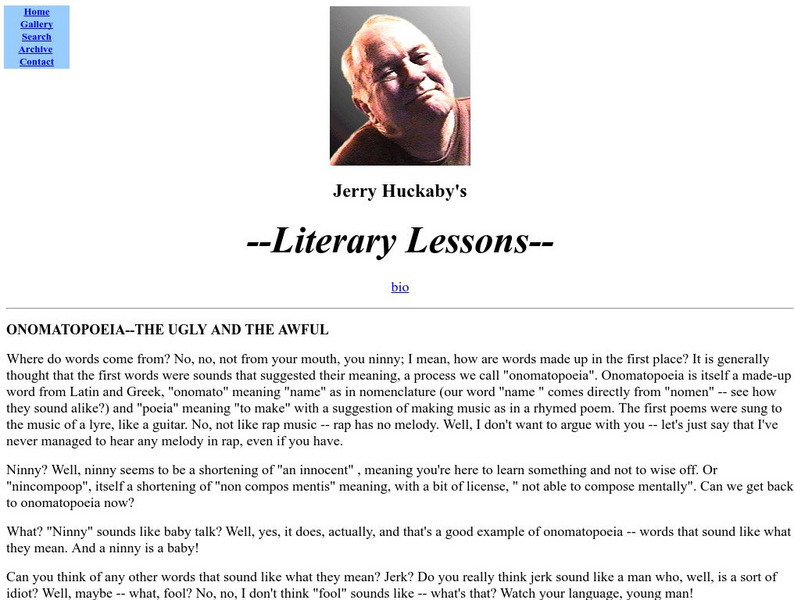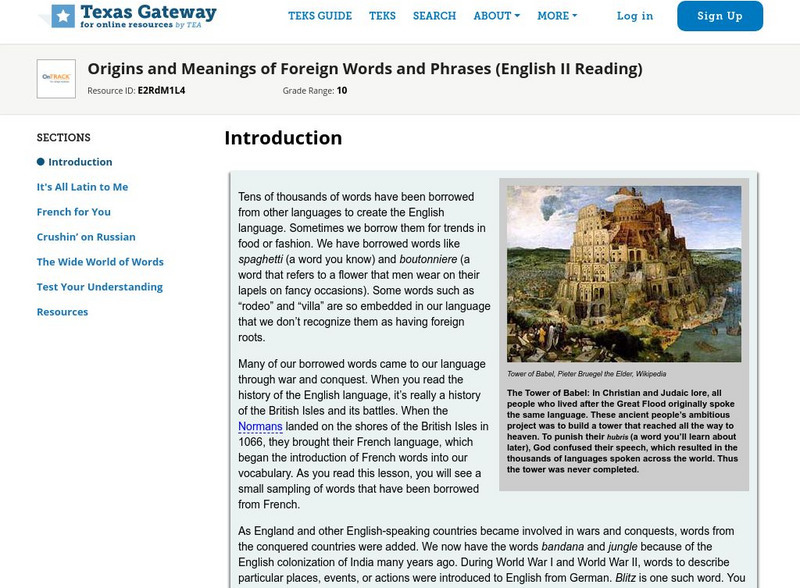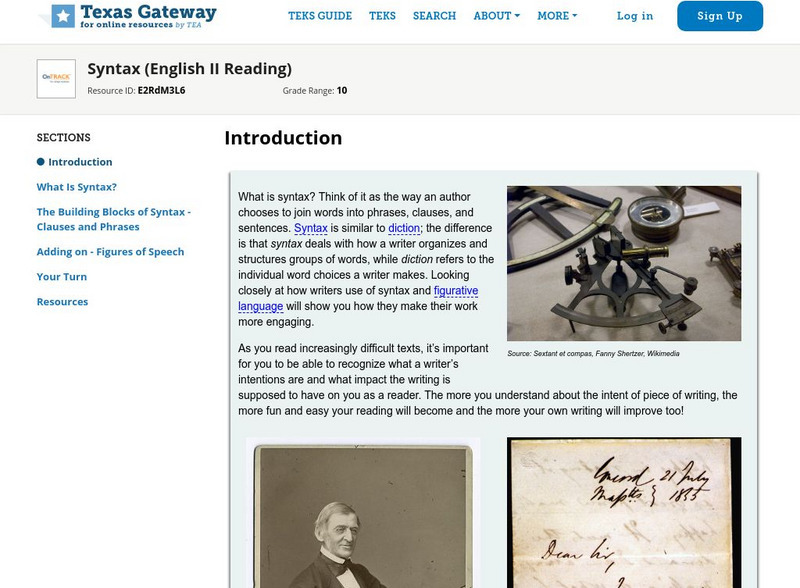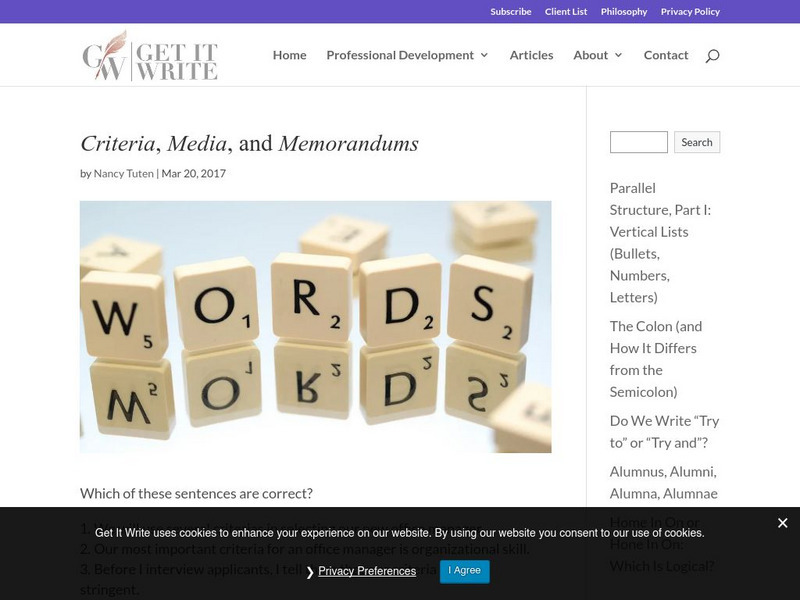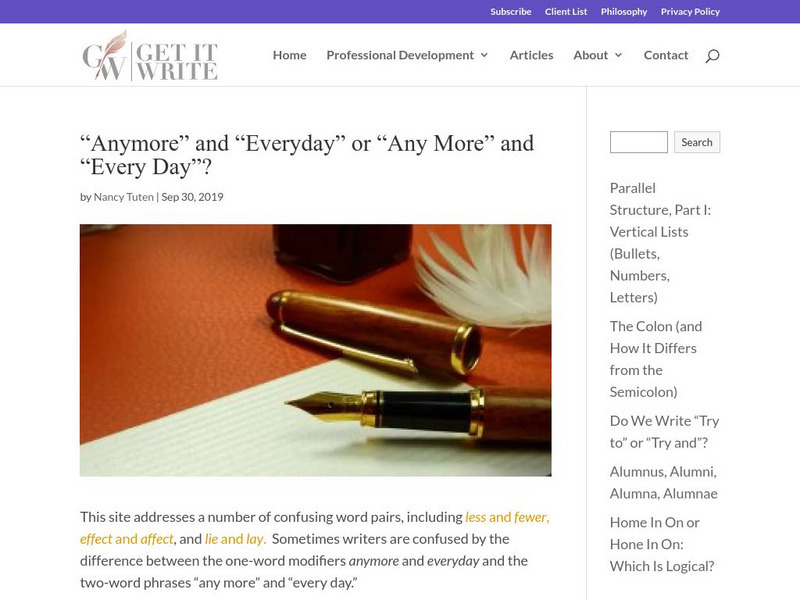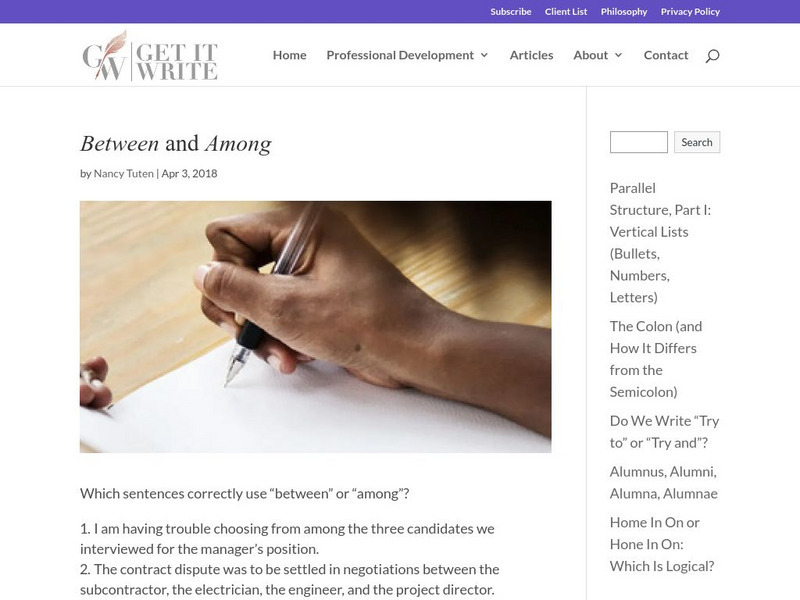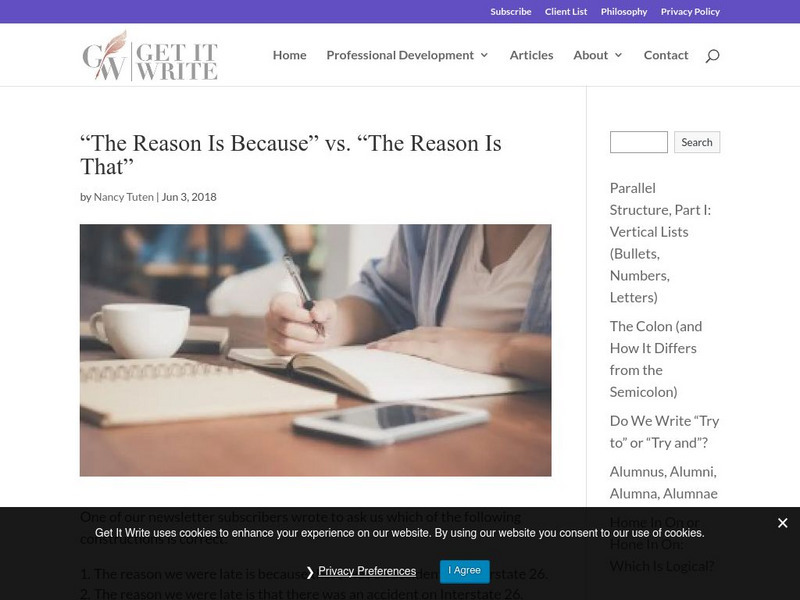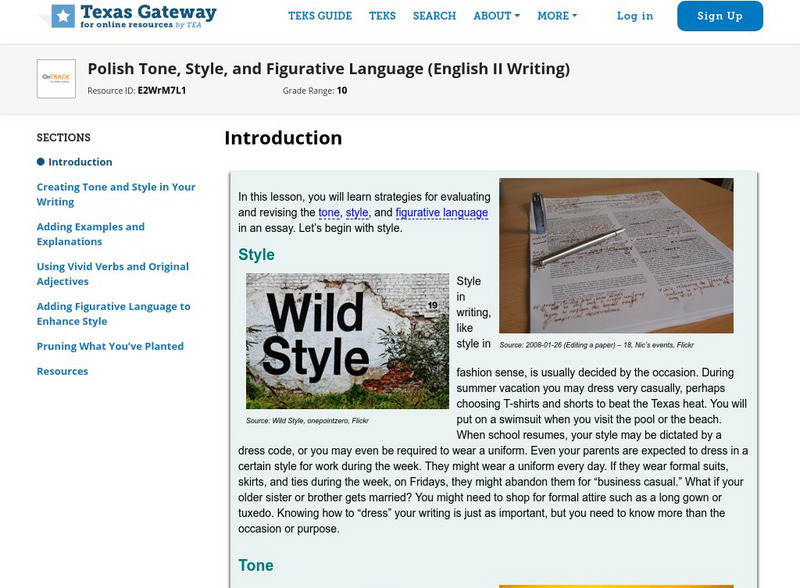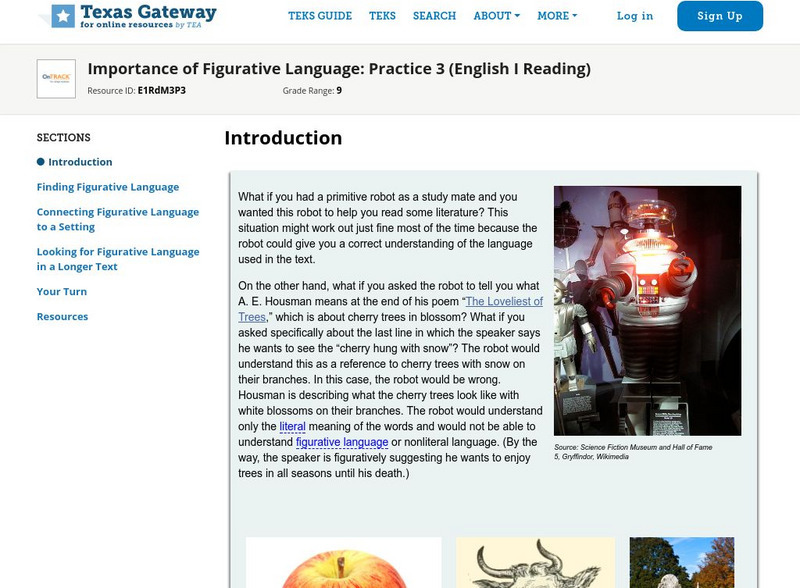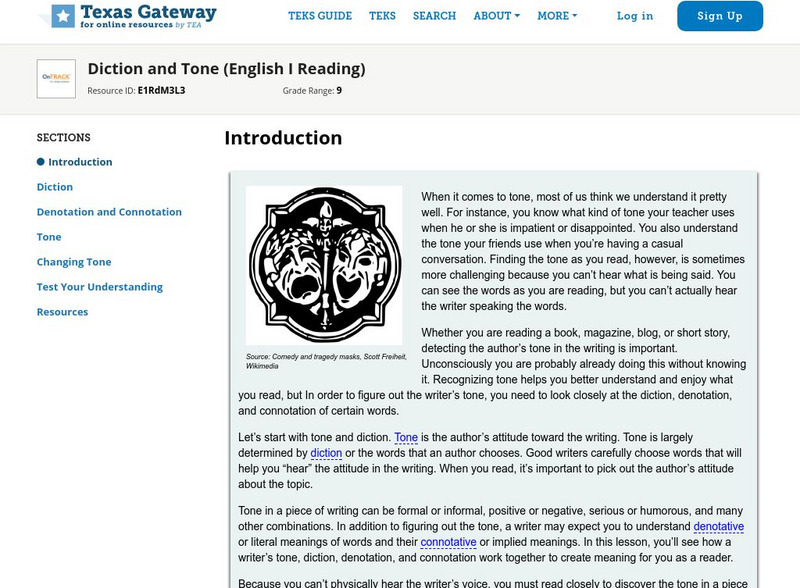University of Toronto (Canada)
University of Toronto: Subject Verb Agreement
Site provides some different rules applying to subject-verb agreement, especially in cases of "expressions of quantity." Excellent information for students looking to hone their craft of writing.
Other
Literary Lessons: Onomatopoeia
Definition and origin of onomatopoeia. A humorous perspective on the formation of common words we use in everyday speech and the relationship between words and the way they sound.
Towson University
Towson University: Online Writing Support: Usage
This entry provides links to usage entries such as misplaced modifiers, subject-verb agreement, pronoun-antecedent agreement, etc.
Texas Education Agency
Texas Gateway: Origins and Meanings of Foreign Words and Phrases
Become acquainted with the origins and meanings of foreign words and phrases frequently used in English texts.
Texas Education Agency
Texas Gateway: Diction and Tone (English Ii Reading)
Evaluate the role of diction and tone in literary nonfiction such as speeches, essays, and other forms.
Texas Education Agency
Texas Gateway: Syntax (English Ii Reading)
Evaluate the role of syntax in literary non-fiction such as speeches, essays, and other forms.
University of Kentucky
Kentucky Classics: A Glossary of Rhetorical Terms With Examples
Rhetorical terms are defined on this site by the Kentucky Division of Classics. With sentence examples of each in English and Greek. Also related links to Perseus.
Lumen Learning
Lumen: Writing About Literature: Additional Resources
This is "'The Legend of Sleepy Hollow': An Allegory for a Young America," an exceptional student example of literary analysis as well as an explanation to the main body of her paper. A link to the MLA website is also provided.
Get It Write
Get It Write: Criteria, Media, and Memorandums
Do you know when to use "criteria" and when to use "criterion?" What about "media" and "medium?" The correct singular and plural usage of these words can cause confusion. This site gives a good explanation of how to use these words...
Get It Write
Get It Write: Anymore and Everyday
Knowing the difference between the use of words adverbially and adjectivally is essentia, especially when using "anymore" and "any more" and "everyday" and "every day." A very good explanation of the usage is given along with many...
Get It Write
Get It Write: "Between" and "Among"
The rule for when to use "between" or "among" is very simple. This tutorial explains the use of each word clearly and ends with a brief quiz to check your understanding.
Get It Write
Get It Write:tuten and Swanson: "The Reason Is Because" vs. "The Reason Is That"
This site briefly explains why the phrase, "the reason is because," should never be used when you mean "the reason is that." A self test is provided at the end of the article.
Texas Education Agency
Texas Gateway: Grammar (English Ii Writing)
This lesson focuses on finding and fixing grammar errors in your writing. It includes strategies for locating errors such as reading your paper aloud to see if your are missing words. It also provides practice with subject-verb agreement...
TED Talks
Ted: Ted Ed: Grammar's Great Divide: The Oxford Comma
If you read "Bob, a DJ and a clown" on a guest list, are three people coming to the party, or only one? That depends on whether you're for or against the Oxford comma- perhaps the most hotly contested punctuation mark of all time. When...
TED Talks
Ted: Ted Ed: Where Do New Words Come From?
Marcel Danesi explains how new words enter a language. L.11-12.1a Gram/Usage changes
Texas Education Agency
Texas Gateway: Polish Tone, Style, and Figurative Language
[Accessible by TX Educators. Free Registration/Login Required] In this lesson, you will learn strategies for evaluating and revising the tone, style, and figurative language in an essay. It also includes practice exercises.
Texas Education Agency
Texas Gateway: Literary Text: Diction and Tone
This lesson deals primarily with diction and tone and how to recognize them in your reading. Tone is largely determined by diction or the word choices a writer makes. The process of choosing the right word involves denotation and...
Texas Education Agency
Texas Gateway: Importance of Figurative Language: Practice 3 (English I Reading)
[Accessible by TX Educators. Free Registration/Login Required] In this lesson, you will sharpen your skill in reading figurative language and in connecting it with the historical and cultural settings in the text.
Texas Education Agency
Texas Gateway: Diction and Tone (English I Reading)
In this lesson, you'll see how a writer's tone, diction, denotation, and connotation work together to create meaning for you as a reader.
Get It Write
Get It Write: Like and As
Do you have trouble knowing when to use "like" and when to use "as?" This is a common mistake, so understanding the difference will help you in writing correctly. This site will give you the usage rules as well as a self-test.
Get It Write
Get It Write: Bad or Badly
Not only does this tutorial give you instructionon the correct usage of "bad" and "badly," it also gives a general review of the role of adjectives and adverbs. After reading through the examples, there is a brief quiz to check your...
Bartleby
Bartleby.com: Strunk's Elements of Style: Words and Expressions Commonly Misused
Common misused words are defined. Examples of how to use them correctly are provided. Some examples are "all right" to "would", "as good or better than", and "as to whether."
TED Talks
Ted: Ted Ed: How Did English Evolve?
This lesson focuses on the evolution of the English language. What is the difference between "a hearty welcome" and "a cordial reception"? In a brief, action-packed history of the English language video, Kate Gardoqui explains why these...
TED Talks
Ted: Ted Ed: Making Sense of Spelling
What can spelling tell us about relationships between words? While spelling may sometimes seem random or unexpected, this lesson illuminates how peeling back the layers of spelling helps us understand the complex history and meaningful...

